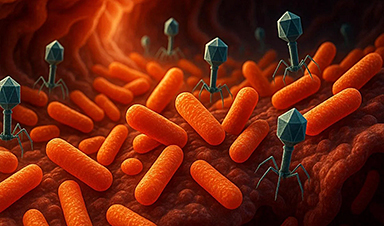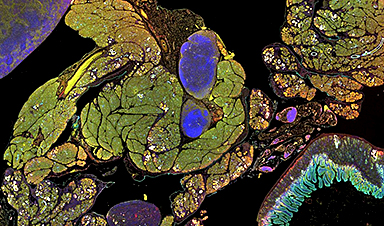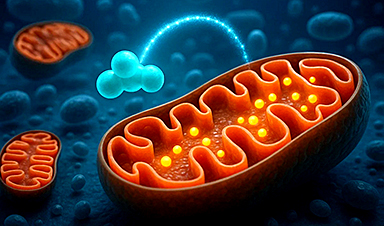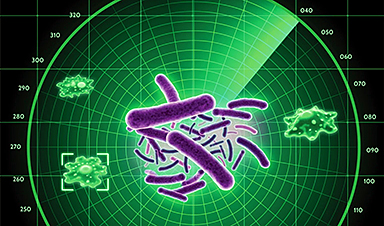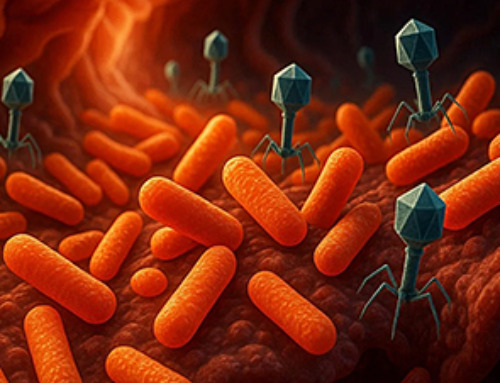A discovery led by OHSU was made possible by years of study conducted by University of Portland undergraduates.
Scientists have discovered a natural compound that can halt a key process involved in the progression of certain cancers and demyelinating diseases—conditions that damage the protective myelin sheath surrounding neurons, such as multiple sclerosis (MS).
A study published in the Journal of Biological Chemistry identified a plant-derived flavonoid called sulfuretin as an inhibitor of an enzyme linked to both MS and cancer. The research, conducted in cell models at Oregon Health & Science University, demonstrated that sulfuretin effectively blocked the enzyme’s activity. The next phase of research will involve testing the compound in animal models to evaluate its therapeutic potential, effectiveness, and possible side effects in treating cancer and neurodegenerative diseases like MS.
A Potentially Wide-Reaching Treatment
“We think this is a drug that could have impact in a lot of different areas,” said Larry Sherman, Ph.D., professor in the Division of Neuroscience at OHSU’s Oregon National Primate Research Center.
The researchers found that sulfuretin, along with a pair of synthetic compounds that were also tested in live cells, inhibited the activity of a particular type of enzyme known as a hyaluronidase, which naturally degrades hyaluronic acid. That’s important because when hyaluronic acid is broken down into fragments, it is known to cause problems in at least two ways:
- Forestalls myelin repair: It prevents the maturation of oligodendrocytes, which are cells that produce myelin. Myelin is the protective sheath covering each nerve cell’s axon — the threadlike portion of a cell that transmits electrical signals between cells. Damage to myelin is associated with MS, stroke, brain injuries, and certain forms of dementia. In addition, delay in myelination can affect infants born prematurely, leading to brain damage or cerebral palsy.
- Allows cancer cells to proliferate: In cancerous tumors, hyaluronidase activity can allow cancer cells to proliferate unchecked by normal cellular death. “Now we have an inhibitor that could actually stop that,” said Sherman, who is also a professor of cell, developmental, and cancer biology in the OHSU School of Medicine.
The new research focuses on inhibiting a specific type of hyaluronidase known as cell migration-inducing and hyaluronan-binding protein, or CEMIP.
In addition to MS and cancer, CEMIP is implicated in a range of disorders, including osteoarthritis, skin infections, brain injury caused by heavy alcohol use, and possibly other neurodevelopment disorders, including Alzheimer’s disease. The study indicates its activity appears to be inhibited by sulfuretin.
Molecules in flowers
The discovery came after years of undergraduates painstakingly screening plant compounds in the lab of co-author Angela Hoffman, Ph.D., a longtime and now-retired professor of chemistry at the University of Portland.
“Over the years, her students have been grinding up these flowers, extracting molecules, and testing to see if any of them blocked hyaluronidase activity,” Sherman said. “Finally, a couple of years ago, they found a compound that was promising.”
Alec Peters, a graduate student in Sherman’s lab at OHSU, found that this compound blocked CEMIP activity in a tumor cell line and in oligodendrocyte progenitor cells. Oligodendrocytes generate myelin.
Hoffman, a nun and chemistry professor who earlier this year retired from the University of Portland after 35 years to lead her convent, began collaborating with Sherman a decade ago. Over that time, she said, hundreds of undergraduate students worked on breaking down dozens of plants to their molecular essence and then testing to see whether any of the compounds worked to neutralize CEMIP.
The new publication validates the students’ diligent work over many years, she said.
“Directing the students to be able to do this kind of research helps them in their careers,” Hoffman said. “This discovery could be useful for Alzheimer’s or other neurodegenerative conditions. As long as the underlying problem relates to hyaluronic acid being broken apart, this could be helpful for people.”
Reference: “Distinct chemical structures inhibit the CEMIP hyaluronidase and promote oligodendrocyte progenitor cell maturation” by Alec Peters, Fatima Banine, Kanon Yasuhara, Angela Hoffman, Prashant K. Basappa, Lily Metri, Ava Gunning, Jake Huffman, Clinton C. VanCampen, Stephen A. Shock and Larry S. Back, 24 October 2024, Journal of Biological Chemistry.
DOI: 10.1016/j.jbc.2024.107916
The research was supported by the National Institutes of Health, grant award P51 OD011902 for the operation of the Oregon National Primate Research Center at OHSU; Congressionally Directed Medical Research Programs grant award MS160144; the National Multiple Sclerosis Society, grant award RG 4843A5/1; the National Institute of Neurological Disorders and Stroke of the NIH, grant award NS054044; and the National Institute of Alcohol Abuse and Alcoholism of the NIH, grant award P60AA010760.
News
Scientists Flip a Gut Virus “Kill Switch” – Expose a Hidden Threat in Antibiotic Treatment
Scientists have long known that bacteriophages, viruses that infect bacteria, live in our gut, but exactly what they do has remained elusive. Researchers developed a clever mouse model that can temporarily eliminate these phages [...]
Enhanced Antibacterial Polylactic Acid-Curcumin Nanofibers for Wound Dressing
Background Wound healing is a complex physiological process that can be compromised by infection and impaired tissue regeneration. Conventional dressings, typically made from natural fibers such as cotton or linen, offer limited functionality. Nanofiber [...]
Global Nanomaterial Regulation: A Country-by-Country Comparison
Nanomaterials are materials with at least one dimension smaller than 100 nanometres (about 100,000 times thinner than a human hair). Because of their tiny size, they have unique properties that can be useful in [...]
Pandemic Potential: Scientists Discover 3 Hotspots of Deadly Emerging Disease in the US
Virginia Tech researchers discovered six new rodent carriers of hantavirus and identified U.S. hotspots, highlighting the virus’s adaptability and the impact of climate and ecology on its spread. Hantavirus recently drew public attention following reports [...]
Studies detail high rates of long COVID among healthcare, dental workers
Researchers have estimated approximately 8% of Americas have ever experienced long COVID, or lasting symptoms, following an acute COVID-19 infection. Now two recent international studies suggest that the percentage is much higher among healthcare workers [...]
Melting Arctic Ice May Unleash Ancient Deadly Diseases, Scientists Warn
Melting Arctic ice increases human and animal interactions, raising the risk of infectious disease spread. Researchers urge early intervention and surveillance. Climate change is opening new pathways for the spread of infectious diseases such [...]
Scientists May Have Found a Secret Weapon To Stop Pancreatic Cancer Before It Starts
Researchers at Cold Spring Harbor Laboratory have found that blocking the FGFR2 and EGFR genes can stop early-stage pancreatic cancer from progressing, offering a promising path toward prevention. Pancreatic cancer is expected to become [...]
Breakthrough Drug Restores Vision: Researchers Successfully Reverse Retinal Damage
Blocking the PROX1 protein allowed KAIST researchers to regenerate damaged retinas and restore vision in mice. Vision is one of the most important human senses, yet more than 300 million people around the world are at [...]
Differentiating cancerous and healthy cells through motion analysis
Researchers from Tokyo Metropolitan University have found that the motion of unlabeled cells can be used to tell whether they are cancerous or healthy. They observed malignant fibrosarcoma [...]
This Tiny Cellular Gate Could Be the Key to Curing Cancer – And Regrowing Hair
After more than five decades of mystery, scientists have finally unveiled the detailed structure and function of a long-theorized molecular machine in our mitochondria — the mitochondrial pyruvate carrier. This microscopic gatekeeper controls how [...]
Unlocking Vision’s Secrets: Researchers Reveal 3D Structure of Key Eye Protein
Researchers have uncovered the 3D structure of RBP3, a key protein in vision, revealing how it transports retinoids and fatty acids and how its dysfunction may lead to retinal diseases. Proteins play a critical [...]
5 Key Facts About Nanoplastics and How They Affect the Human Body
Nanoplastics are typically defined as plastic particles smaller than 1000 nanometers. These particles are increasingly being detected in human tissues: they can bypass biological barriers, accumulate in organs, and may influence health in ways [...]
Measles Is Back: Doctors Warn of Dangerous Surge Across the U.S.
Parents are encouraged to contact their pediatrician if their child has been exposed to measles or is showing symptoms. Pediatric infectious disease experts are emphasizing the critical importance of measles vaccination, as the highly [...]
AI at the Speed of Light: How Silicon Photonics Are Reinventing Hardware
A cutting-edge AI acceleration platform powered by light rather than electricity could revolutionize how AI is trained and deployed. Using photonic integrated circuits made from advanced III-V semiconductors, researchers have developed a system that vastly [...]
A Grain of Brain, 523 Million Synapses, Most Complicated Neuroscience Experiment Ever Attempted
A team of over 150 scientists has achieved what once seemed impossible: a complete wiring and activity map of a tiny section of a mammalian brain. This feat, part of the MICrONS Project, rivals [...]
The Secret “Radar” Bacteria Use To Outsmart Their Enemies
A chemical radar allows bacteria to sense and eliminate predators. Investigating how microorganisms communicate deepens our understanding of the complex ecological interactions that shape our environment is an area of key focus for the [...]

